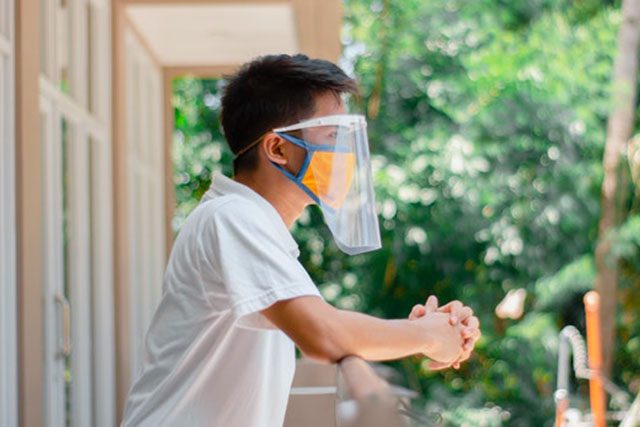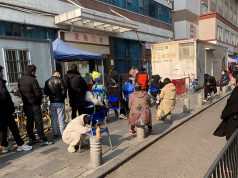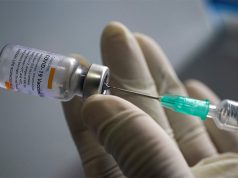
Filipinos breathe a sigh of relief after Health Undersecretary Leopold Vega announced that face shields may now be removed in outdoor settings.
The official, who also acts as the country’s treatment czar, said that face shields are only required in indoor settings where the coronavirus transmission risk is higher.
“Kapag naglalakad ka sa kalye, baka maka-affect ‘yung moist nito so puwede niyo pong tanggalin ‘yan,” he said in an interview with ABS-CBN News Channel on Wednesday.
“Ang face shields kailangan lang naman talaga ‘yan ‘pag nasa indoor ka, ‘pag nasa mall ka or ‘pag may interaction ka face to face inside. Kapag nasa outside naman, ang risk of transmission is very low,” Vega added.
“Pero kapag pumasok kayo sa mga indoors po, kailangan may face shields kasi ito ‘yung added protection na hindi kayo maka-transmit o mahawaan kayo,” he further said.
Vega’s comment comes months after hundreds of scientists in the international community have urged the World Health Organization to acknowledge COVID-19’s airborne transmission last year.
Last April, the United Nations agency updated its Q&A page dedicated to COVID-19 by saying that people can be infected by inhaling “aerosols” or when it comes into contact with one’s eyes, nose, or lips.
“The virus can also spread in poorly ventilated and/or crowded indoor settings, where people tend to spend longer periods of time. This is because aerosols remain suspended in the air or travel farther than 1 meter (long-range),” WHO added.
In terms of face shields, a 2020 study published in the journal Physics of Fluids found that although it blocks the initial forward motion of one’s cough or sneeze, the expelled droplets can move around the visor “with relative ease and spread out over a large area.”
The simulation that the researchers performed showed that droplets remained suspended at the bottom of the shield and spread to the front and sides of the mannequin used.
“For the face shield simulation, the shield initially deflected droplets toward the ground after a cough. But small droplets remained suspended at the bottom of the shield and then floated around the sides, eventually spreading about 3 feet (0.9 meters) to the front and sides of the mannequin. In some cases, the droplets spread backward, behind the mannequin, instead of forward,” the authors were quoted as saying.
Earlier this month, conversations about the necessity of face shields surfaced among Filipinos who pointed out that there are countries that have mitigated the outbreak yet didn’t require the item.
There was also a call to improve ventilation in indoor spaces and bring more attention to utilizing outdoor spaces after studies on COVID-19’s airborne transmission surfaced.
Call for total ban on use of face shield
Vega’s comments about dropping face shields outdoors were welcomed by Filipinos on social media while others wondered if it would extend to indoor spaces as well.
“Finally, some sense from DOH!” a Twitter user exclaimed in response to the health official.
“Plssss again, it took them a year and few (months) to figure this out,” another online user reacted.
“Pwede po bang wala na lang talagang face shield at all times?” a different Twitter user wondered.
“So, face shields gone indoors by 2036 or something,” another online user mused.
Some lawmakers recently urged the health department to review the government’s policy of wearing face shields, saying that it is “anti-poor.”
The WHO said that it can be used as eye protection against respiratory droplets but it does not have recommendations on its mandatory wearing as a policy.
Meanwhile, the United States’ Centers for Disease Control and Prevention notes that “face shields are not as effective” in terms of protecting oneself from respiratory droplets.
“Face shields have large gaps below and alongside the face, where your respiratory droplets may escape and reach others around you and will not protect you from respiratory droplets from others,” it said on its website.









